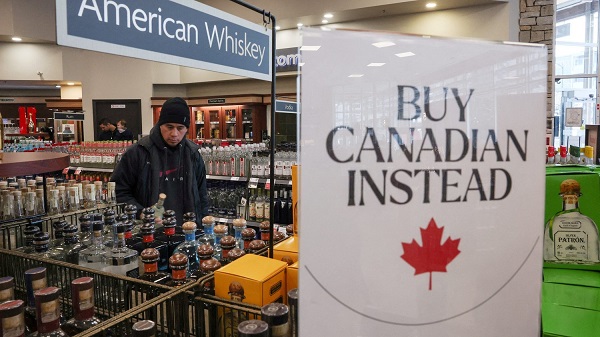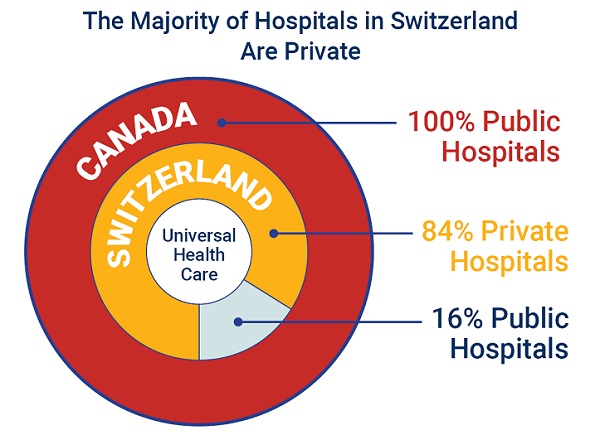Alberta
Province announces a new High School for Blackfalds and plans for a new Middle School in Red Deer

Minister LaGrange, Minister Panda and Minister Sawhney announce provincial school capital funding at Nose Creek School in Calgary.
From the Province of Alberta
Building schools for the future
Following through on its commitment to continue building new schools, the province has announced 25 new school projects.
The Budget 2019 capital plan supports 15 new schools, including brand new high schools in Calgary, Edmonton, Leduc, Blackfalds and Langdon. Six schools are slated for replacement and four will receive modernization or additions. Together, the 25 projects will receive $397 million.
“We made a promise to Albertans that our government will continue to build new schools, and we are doing exactly that. Through our significant investment in new schools, replacements, modernizations and infrastructure upkeep, our children will continue to learn in up-to-date and safe spaces. This will result in better success in our classrooms. The future is bright for Alberta students.”
“These 25 projects confirm our government’s commitment to continue to build schools across the province. Alberta Infrastructure will continue to deliver key infrastructure projects to build prosperity for Albertans.”
Budget 2019 also includes $1.4 billion over four years to continue work on previously announced school projects across Alberta, which includes $123 million for about 250 new modular classrooms to address the most urgent needs for additional space across the province. There are more than 60 projects underway in the province. Twenty-seven are expected to be open for the 2020-21 school year, and the remaining projects are in various stages of planning and construction.
The province will also provide $527 million to school divisions for plant operations and maintenance to support the day-to-day upkeep of school facilities. Additionally, $194 million will support the capital maintenance and renewal of existing school buildings through the Infrastructure Maintenance and Renewal Program.
“I am pleased that the government chose to make this announcement here in Calgary-North East. Students and families in my community will be relieved to hear that they will be getting the new high school we have needed for a long time. I’m proud that this critical funding was included in Budget 2019, as this was one of my first and most important motivations for why I wanted to represent Calgary-North East at the legislature.”
“On behalf of our students and the Calgary Board of Education, we would like to thank Minister LaGrange and Minister Panda for this important investment in school capital. We are pleased they chose to come to Calgary to make this provincial announcement and look forward to new CBE schools that will benefit students in north Calgary and in the growing community of Auburn Bay.”
The 25 capital projects are:
| Community | School Authority | Project Type/Name |
|---|---|---|
| *Beaumont | Conseil scolaire Centre Nord (Greater North Central Francophone Education Region) | new school (K-12) |
| *Blackfalds | Wolf Creek Public Schools | new high school (9-12) |
| Buffalo Head Prairie | Fort Vermilion School Division | Blue Hills Community School addition & modernization |
| Calgary – Auburn Bay | Calgary Board of Education | new elementary school (K-4) |
| Calgary – Auburn Bay | Calgary Board of Education | new middle school (5-9) |
| Calgary – north | Calgary Board of Education | new high school (10-12) |
| Carstairs | Chinook’s Edge School Division | Carstairs Elementary School addition |
| Cochrane | Calgary Catholic School District | new elementary/junior high school (K-9) |
| Condor & Leslieville | Wild Rose School Division | David Thompson solution modernization/replacement |
| *Edmonton – south east | Edmonton Public Schools | new high school (10-12) |
| Edmonton – Windermere-Keswick | Edmonton Public Schools | new elementary/junior high (K-9) |
| *Edmonton – Heritage Valley Town Centre | Edmonton Catholic Schools | new high school (10-12) |
| Edmonton – Windermere/Keswick | Edmonton Catholic Schools | new elementary/junior high (K-9) |
| *Fort Chipewyan | Northland School Division | Athabasca Delta School modernization/replacement |
| *Grande Prairie | Peace Wapiti School Division | Harry Balfour School replacement |
| *Langdon | Rocky View Schools | new junior/senior high school (7-12) |
| *Leduc | Black Gold School Division | new high school (10-12) |
| Legal | Conseil scolaire Centre Nord(Greater North Central Francophone Education Region) | new elementary/junior high school (K-9) |
| Morinville | Greater St. Albert Catholic Schools | Morinville Community High School CTS modernization |
| Morrin | Prairie Land School Division | Morrin School replacement |
| Peace River | Conseil Scolaire du Nord-Ouest(Northwest Francophone Education Region) | École des Quatre-Vents replacement |
| *Red Deer | Red Deer Catholic Regional Schools | new middle school (6-9) |
| Smoky Lake | Aspen View Public Schools | H.A. Kostash replacement |
| *St. Albert | St. Albert Public Schools | Bellerose Composite High School addition & modernization |
| Whitecourt | Living Waters Catholic Schools | new elementary school (K-3) |
*Design funding
Alberta
Alberta Premier Danielle Smith Discusses Moving Energy Forward at the Global Energy Show in Calgary

From Energy Now
At the energy conference in Calgary, Alberta Premier Danielle Smith pressed the case for building infrastructure to move provincial products to international markets, via a transportation and energy corridor to British Columbia.
“The anchor tenant for this corridor must be a 42-inch pipeline, moving one million incremental barrels of oil to those global markets. And we can’t stop there,” she told the audience.
The premier reiterated her support for new pipelines north to Grays Bay in Nunavut, east to Churchill, Man., and potentially a new version of Energy East.
The discussion comes as Prime Minister Mark Carney and his government are assembling a list of major projects of national interest to fast-track for approval.
Carney has also pledged to establish a major project review office that would issue decisions within two years, instead of five.
Alberta
Punishing Alberta Oil Production: The Divisive Effect of Policies For Carney’s “Decarbonized Oil”

From Energy Now
By Ron Wallace
The federal government has doubled down on its commitment to “responsibly produced oil and gas”. These terms are apparently carefully crafted to maintain federal policies for Net Zero. These policies include a Canadian emissions cap, tanker bans and a clean electricity mandate.
Following meetings in Saskatoon in early June between Prime Minister Mark Carney and Canadian provincial and territorial leaders, the federal government expressed renewed interest in the completion of new oil pipelines to reduce reliance on oil exports to the USA while providing better access to foreign markets. However Carney, while suggesting that there is “real potential” for such projects nonetheless qualified that support as being limited to projects that would “decarbonize” Canadian oil, apparently those that would employ carbon capture technologies. While the meeting did not result in a final list of potential projects, Alberta Premier Danielle Smith said that this approach would constitute a “grand bargain” whereby new pipelines to increase oil exports could help fund decarbonization efforts. But is that true and what are the implications for the Albertan and Canadian economies?
The federal government has doubled down on its commitment to “responsibly produced oil and gas”. These terms are apparently carefully crafted to maintain federal policies for Net Zero. These policies include a Canadian emissions cap, tanker bans and a clean electricity mandate. Many would consider that Canadians, especially Albertans, should be wary of these largely undefined announcements in which Ottawa proposes solely to determine projects that are “in the national interest.”
The federal government has tabled legislation designed to address these challenges with Bill C-5: An Act to enact the Free Trade and Labour Mobility Act and the Building Canada Act (the One Canadian Economy Act). Rather than replacing controversial, and challenged, legislation like the Impact Assessment Act, the Carney government proposes to add more legislation designed to accelerate and streamline regulatory approvals for energy and infrastructure projects. However, only those projects that Ottawa designates as being in the national interest would be approved. While clearer, shorter regulatory timelines and the restoration of the Major Projects Office are also proposed, Bill C-5 is to be superimposed over a crippling regulatory base.
It remains to be seen if this attempt will restore a much-diminished Canadian Can-Do spirit for economic development by encouraging much-needed, indeed essential interprovincial teamwork across shared jurisdictions. While the Act’s proposed single approval process could provide for expedited review timelines, a complex web of regulatory processes will remain in place requiring much enhanced interagency and interprovincial coordination. Given Canada’s much-diminished record for regulatory and policy clarity will this legislation be enough to persuade the corporate and international capital community to consider Canada as a prime investment destination?
As with all complex matters the devil always lurks in the details. Notably, these federal initiatives arrive at a time when the Carney government is facing ever-more pressing geopolitical, energy security and economic concerns. The Organization for Economic Co-operation and Development predicts that Canada’s economy will grow by a dismal one per cent in 2025 and 1.1 per cent in 2026 – this at a time when the global economy is predicted to grow by 2.9 per cent.
It should come as no surprise that Carney’s recent musing about the “real potential” for decarbonized oil pipelines have sparked debate. The undefined term “decarbonized”, is clearly aimed directly at western Canadian oil production as part of Ottawa’s broader strategy to achieve national emissions commitments using costly carbon capture and storage (CCS) projects whose economic viability at scale has been questioned. What might this mean for western Canadian oil producers?
The Alberta Oil sands presently account for about 58% of Canada’s total oil output. Data from December 2023 show Alberta producing a record 4.53 million barrels per day (MMb/d) as major oil export pipelines including Trans Mountain, Keystone and the Enbridge Mainline operate at high levels of capacity. Meanwhile, in 2023 eastern Canada imported on average about 490,000 barrels of crude oil per day (bpd) at a cost estimated at CAD $19.5 billion. These seaborne shipments to major refineries (like New Brunswick’s Irving Refinery in Saint John) rely on imported oil by tanker with crude oil deliveries to New Brunswick averaging around 263,000 barrels per day. In 2023 the estimated total cost to Canada for imported crude oil was $19.5 billion with oil imports arriving from the United States (72.4%), Nigeria (12.9%), and Saudi Arabia (10.7%). Since 1988, marine terminals along the St. Lawrence have seen imports of foreign oil valued at more than $228 billion while the Irving Oil refinery imported $136 billion from 1988 to 2020.
What are the policy and cost implication of Carney’s call for the “decarbonization” of western Canadian produced, oil? It implies that western Canadian “decarbonized” oil would have to be produced and transported to competitive world markets under a material regulatory and financial burden. Meanwhile, eastern Canadian refiners would be allowed to import oil from the USA and offshore jurisdictions free from any comparable regulatory burdens. This policy would penalize, and makes less competitive, Canadian producers while rewarding offshore sources. A federal regulatory requirement to decarbonize western Canadian crude oil production without imposing similar restrictions on imported oil would render the One Canadian Economy Act moot and create two market realities in Canada – one that favours imports and that discourages, or at very least threatens the competitiveness of, Canadian oil export production.
Ron Wallace is a former Member of the National Energy Board.
-

 Bruce Dowbiggin2 days ago
Bruce Dowbiggin2 days agoCanadians Thinks America Owes Them. Trump Has Other Ideas
-

 Business2 days ago
Business2 days agoThe carbon tax’s last stand – and what comes after
-

 conflict1 day ago
conflict1 day agoIsrael strikes Iran, targeting nuclear sites; U.S. not involved in attack
-

 Business2 days ago
Business2 days ago84% of Swiss hospitals and 60% of hospitalizations are in private facilities, and they face much lower wait times
-

 Business1 day ago
Business1 day agoTrump: ‘Changes are coming’ to aggressive immigration policy after business complaints
-

 International2 days ago
International2 days agoPentagon agency to simulate lockdowns, mass vaccinations, public compliance messaging
-

 Alberta1 day ago
Alberta1 day agoPunishing Alberta Oil Production: The Divisive Effect of Policies For Carney’s “Decarbonized Oil”
-

 International1 day ago
International1 day agoIsrael’s Decapitation Strike on Iran Reverberates Across Global Flashpoints





